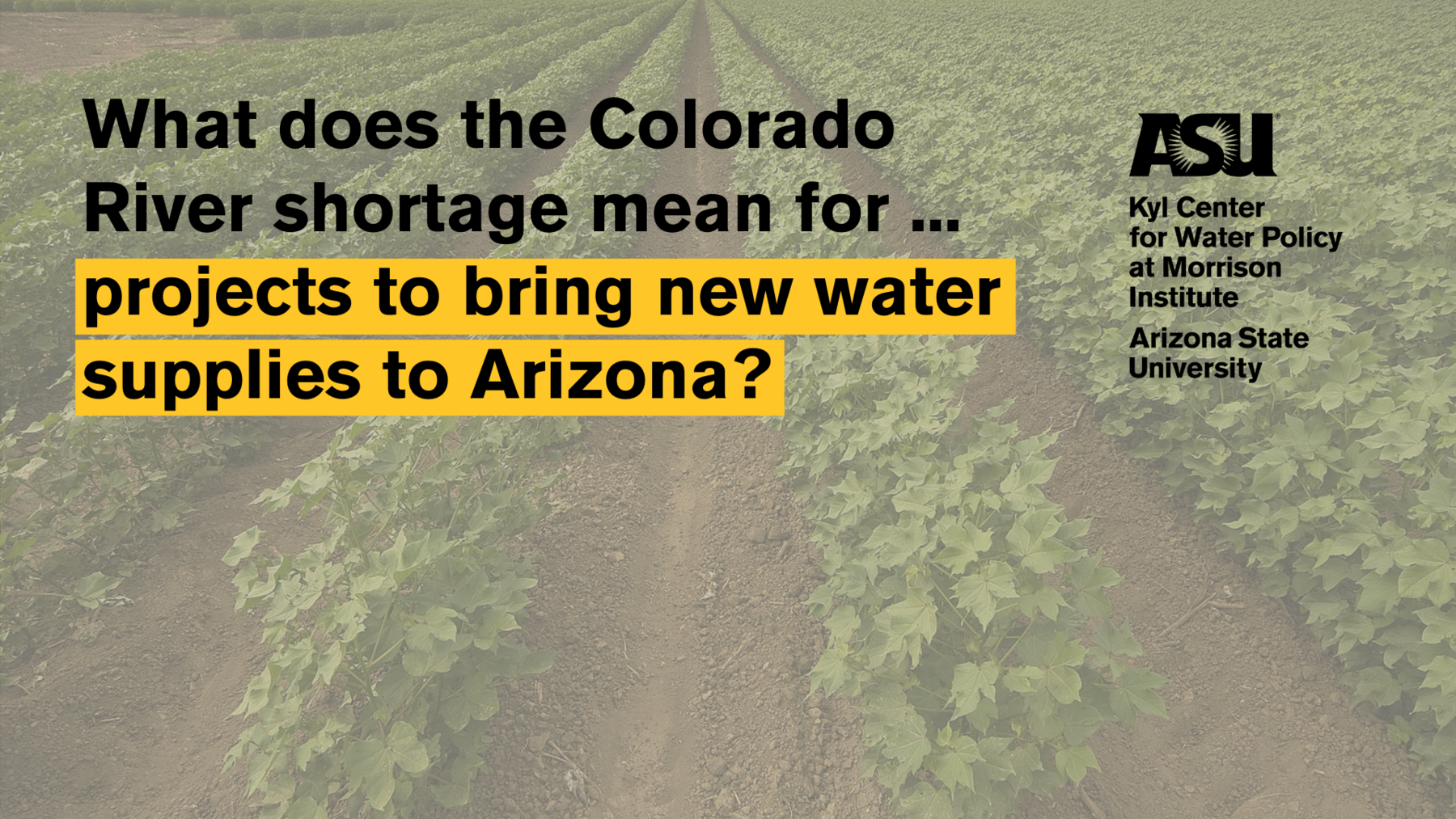
What does the pending Colorado River shortage announcement mean for . . . projects to bring new water supplies to Arizona?
Leading up to the expected Colorado River shortage declaration this month, the Kyl Center for Water Policy at Morrison Institute will be posting information about what the shortage will mean for Arizona communities. This is part six. The rest of the series is available here.
Many communities in Central Arizona have sufficient, reliable renewable water supplies to meet their future demand. But some communities don’t have all the water they need for their projected growth, and anticipation of the first-ever declaration of curtailment of the Colorado River has increased interest in augmentation projects — that is, projects to bring new water supplies into Central Arizona. This year, the Arizona Legislature set aside $160 million to help fund future augmentation projects.
Three things to think about with respect to new water supply projects:
- The water users who will be most immediately impacted by the Colorado River shortage — Pinal County farmers — are unlikely to benefit from a water augmentation project. Why? Because any new supplies of water will be too expensive to be used to grow crops.
- Typically, the communities that benefit from new water supplies are the ones who must pay for that water and the infrastructure to treat and deliver it. For a water supply project to be financed, the lender must have some assurance that the borrowers have the capacity to pay back the loan. Proving that there will be enough future demand to pay off that financing can be challenging.
- Investments in efficiency, conservation and re-use are in many instances less expensive, gallon-for-gallon, than investments in new water supplies.
Resources:
Water Augmentation Concepts on the Arizona Water Blueprint
Arizona WIFA (Water Infrastructure Finance Authority of Arizona)